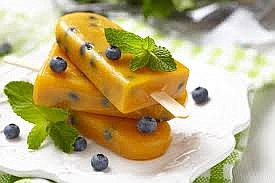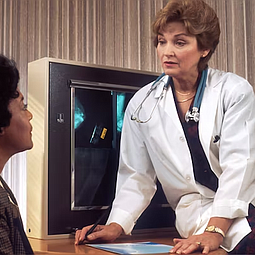Cool off with sweet and savory frozen pops
August 8, 2023 at 12:05 p.m. | Updated August 8, 2023 at 12:05 p.m.
Frosty ice pops can melt the heat away on a sweltering August day. Make your own healthy pops. They’re perfect for a backyard barbecue or birthday party. Fill them with fresh fruits, or even vegetables, cutting back on sugar to let the natural sweetness of the produce shine through.
For creamy pops, add yogurt, milk or soy milk. Light coconut milk freezes nicely, and could be paired with blended fresh pineapple.
Try thinking outside the box: what about cucumber pops, lavender pops with rose petals, bluebarb pops (blueberry rhubarb) or heritage tomatoes? In many Asian countries, corn kernels are a common ingredient in ice cream, so how about a coconut milk corn pop?
Or brew up some exotic ice teas and freeze them. It’s up to you whether to add sugar.
Buy inexpensive ice pop molds or make your own using paper cups. Cover the filled cups with foil and poke a plastic spoon or wooden stick through. Or just fill up your ice cube tray with the treats below and use cocktail picks. Freeze your homemade ice pops for at least four to six hours. They will keep in the freezer for a week or two.
Sweet or savory strawberry ice pops
Try two varieties: sweet and creamy or with the grown-up flavor of balsamic vinegar and black pepper.
2 cups strawberries, rinsed and hulled
1/2 cup light sour cream
2 to 4 tablespoons sugar
2 teaspoons lemon juice
3 teaspoons balsamic vinegar (optional)
¼ teaspoon ground black pepper (optional)
In a blender or food processor, whirl berries until smooth. Press half of mixture through fine strainer and throw away seeds. Return to blender. For creamy version, whirl in the sour cream, sugar and lemon juice. For savory version, omit sour cream and lemon juice, add balsamic vinegar and pepper instead. Pour into molds and freeze. Makes about 6 pops.
Nutritional information (per pop):
With sour cream and lemon juice: Calories: 69, Carbohydrates: 13 grams, Protein: 1 gram, Sodium: 44 milligrams
With balsamic: Calories: 20, Carbohydrates: 5 grams, Protein: 0 grams, Sodium: 1 milligram
Heritage tomato salsa ice pops
Serve these as an appetizer at your next barbecue. Use low-sodium tomato juice to save over 300 milligrams of sodium per recipe.
3 cups mixed heritage tomatoes, chopped
1 cup low-sodium tomato or vegetable juice
½ cup diced cucumber
1 tablespoon lime juice
½ minced jalapeno
Pulse tomatoes in blender or food processor just until chunky. Add remaining ingredients, pulse. Spoon into molds and freeze. Makes about 6 pops.
Nutritional information (per pop):
Calories: 24, Carbohydrates: 5 grams, Protein: 1 gram, Sodium: 65 milligrams
Ginger mango ice pops
2-3 mangos, peeled and diced
¾ cup yogurt
2-4 tablespoons sugar, to taste
1 teaspoon ground ginger
2 teaspoons lime juice
In blender or food processor, blend all ingredients. Spoon into molds and freeze. Makes about 6 pops.
Nutritional information (per pop):
Calories: 128, Carbohydrates: 29 grams, Protein: 3 grams, Sodium: 24 milligrams
Cranberry-raspberry ice pops
3 cups raspberries, rinsed
2/3 cup white cranberry juice
3-4 tablespoons sugar
1 teaspoon vanilla
In a blender, whirl the berries until smooth. Push half the mixture though a fine strainer and throw away the seeds. Add cranberry juice, sugar and vanilla to the berry puree. Stir until the sugar melts. Makes about six pops.
Nutrition information (per pop):
Calories: 107, Carbohydrates: 26 grams, Protein: 1 gram, Sodium: 2 milligrams
[Contributor Katy G. Wilkens recently retired as registered dietitian and department head at Northwest Kidney Centers. The National Kidney Foundation Council on Renal Nutrition has honored her with its highest awards for excellence in education and for significant contributions in renal nutrition. She has also been awarded the Medal of Excellence in kidney nutrition from the American Association of Kidney Patients.]
Eating Well, Living Well classes
Studies show that working with a registered dietitian can delay kidney failure and postpone dialysis for longer than two years. FREE nutrition classes taught by Katy’s former team of registered dietitians are available at convenient times and locations around Puget Sound.
Eating Well, Living Well classes teach people how to eat healthier to slow the progress of kidney disease and postpone dialysis. Learn more at www.nwkidney.org/classes.





